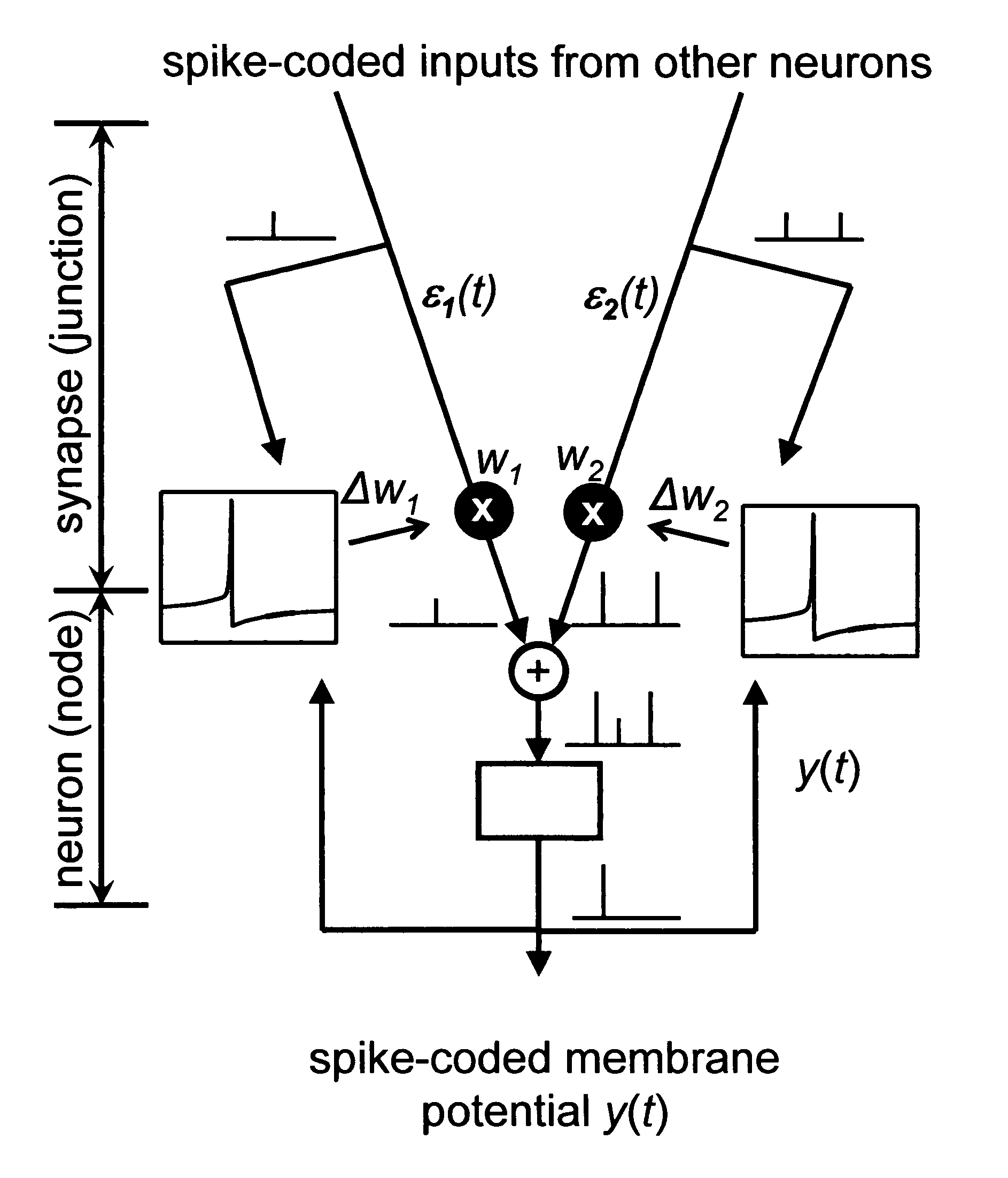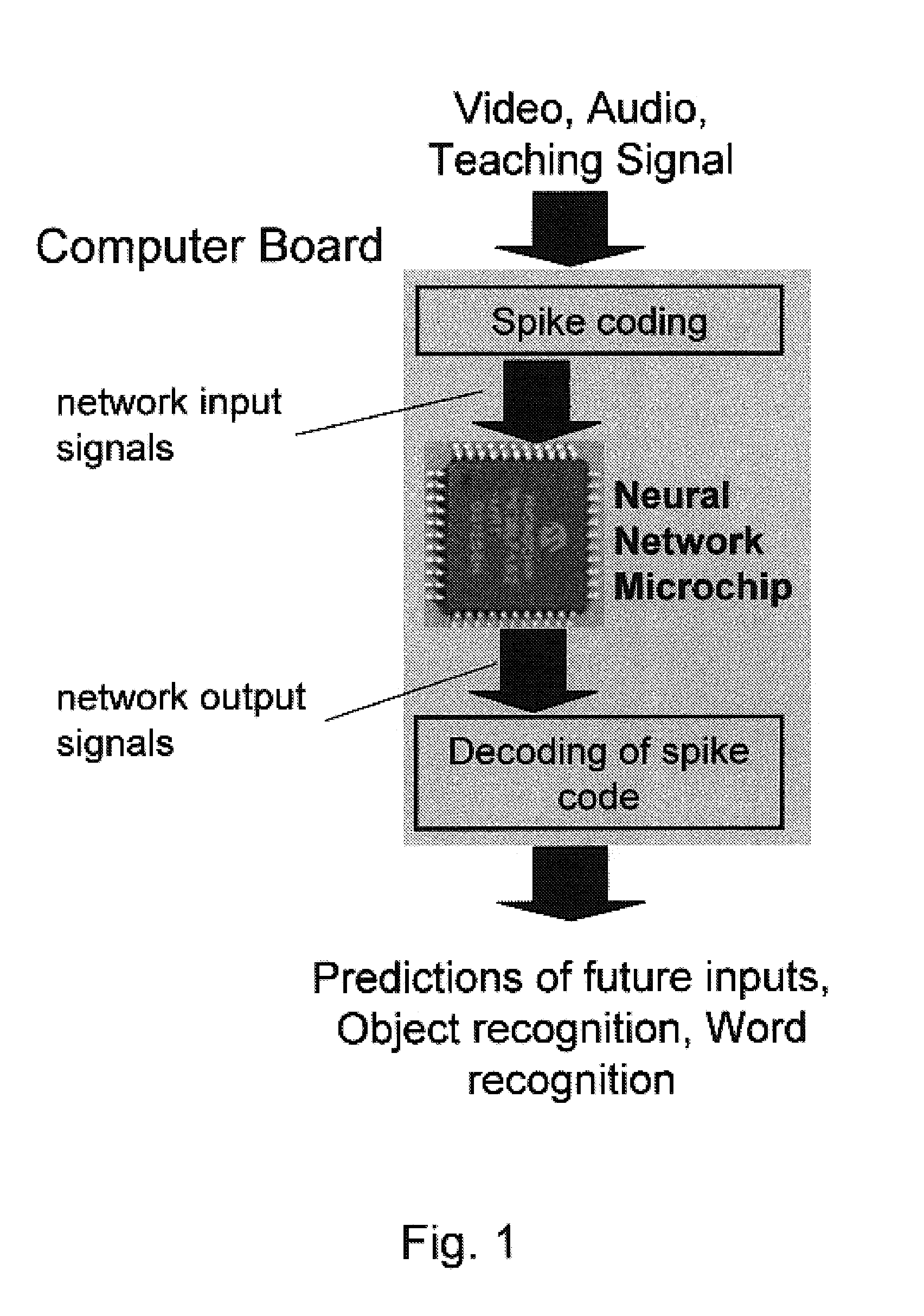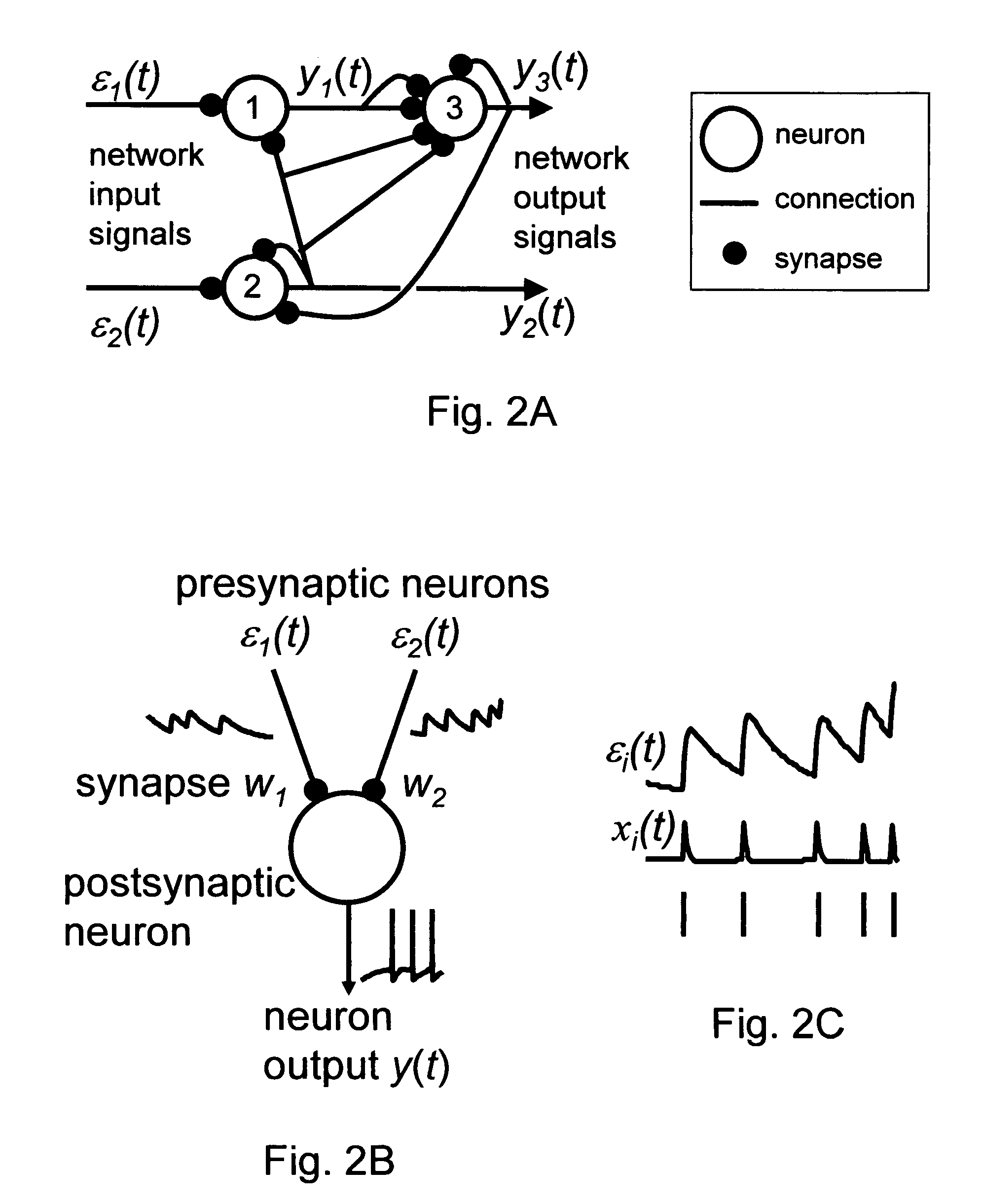Applications of an algorithm that mimics cortical processing
a cortical processing and algorithm technology, applied in computing models, biological models, instruments, etc., can solve problems such as imagination and dreaming, correlation analysis has several drawbacks, and limited application of correlation analysis
- Summary
- Abstract
- Description
- Claims
- Application Information
AI Technical Summary
Problems solved by technology
Method used
Image
Examples
Embodiment Construction
Explanations of Some Words
[0082]Covariance, Correlation. The correlation between two signals is the same as the covariance if one of the signals has a mean value of zero. The correlation between two signals is the sum of the product of both signals (see eq. 2).
[0083]Error Function. Algorithms used by engineers often compute a set of variables such that an error (or energy) function is minimized for a given data set. For these so-called optimization algorithms, the error function defines the goal of the algorithm. This goal may be data compression, or data prediction, or others. For neural networks, a set of parameters called the weights (also called synaptic strengths or parameters) are slowly adapted until the values of these weights minimize the error criterion. This process is called learning or training. The equation for adapting the weights is called the learning rule.
[0084]Internal Model. An internal model of a physical process is a set of equations that imitates the input-out...
PUM
 Login to View More
Login to View More Abstract
Description
Claims
Application Information
 Login to View More
Login to View More - R&D
- Intellectual Property
- Life Sciences
- Materials
- Tech Scout
- Unparalleled Data Quality
- Higher Quality Content
- 60% Fewer Hallucinations
Browse by: Latest US Patents, China's latest patents, Technical Efficacy Thesaurus, Application Domain, Technology Topic, Popular Technical Reports.
© 2025 PatSnap. All rights reserved.Legal|Privacy policy|Modern Slavery Act Transparency Statement|Sitemap|About US| Contact US: help@patsnap.com



